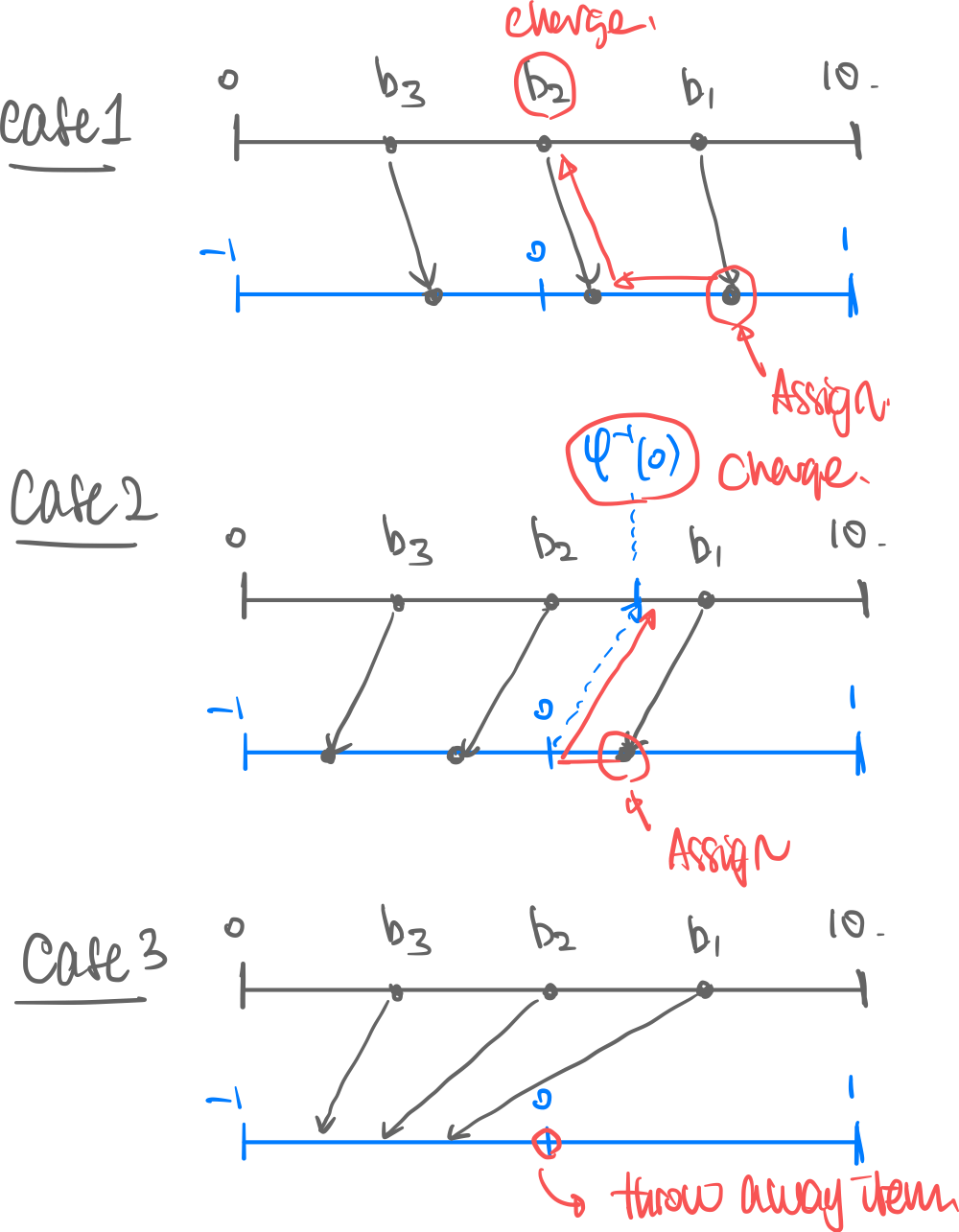Motivation. Sometimes we aim to maximize revenue instead of social welfare.
- In this case, we assume that we know a little bit about the bidder’s private valuations—we know the distributions . (we call this a baysian auction.)
- This is because unless we do this, the revenue maximization is impossible, since it is hard to guarantee DSIC.)
- Then, in a DSIC auction , the revenue maximization goal can be phrased as:
In order to do to this, we introduce a new concept, and as we will see later it will simplify the above problem.
def. Virtual Value. For a bidders’ true valuation whose CDF is , PDF is , the virtual value is defined as:
Properties.
- may be negative
Intuition. As annotated above, treat as the amount of money we would like to collect from bidder . But this is discounted by a certain factor (=“information penalty”) because we know a bit of information about them—their distribution.
We can rephrase the above revenue maximization problem in terms of virtual value as the following:
thm. (expected virtual welfare is expected revenue)
Motivation. Now the revenue maximization goal is simply to maximize expected virtual welfare. However, we still need to make sure the bidders are truthful, because we need to maximize over .
- ⇒ Using Myerson’s lemma, we can create auctions that are truthful. The following are conditions of Myerson’s lemma, applied in the context of virtual value.
- Then, we will give an example of this in a single-item many-bidder auction where these conditions hold.
def. Vickery Auction with Reserve
- Calculate virtual values for all bidder’s bids
- Give the item to the bidder with the highest virtual value , unless the highest bidder’s virtual value is below zero—.
- The the highest bidder’s virtual value is below zero, throw away the item. Auction is over.
- Calculate the reserve price
- Charge them —either the reserve price, or the second-price
- This auction will maximize revenue.
Visual Interpretation. An example of three different cases where different distributions lead to different virtual value

thm. (General case of revenue maximization.)
- Assuming is regular for every bidder …
- Transform the truthfully reported valuation into corresponding virtual value
- Allocate by maximizing virtual welfare:
- Charge payments according to the
def. Regular Distribution. A distribution is regular iff if its virtual value function is monotonic.
thm. If all bidder’s values follows an i.i.d. regular distribution, Vickery Auction with Reserve is DSIC.